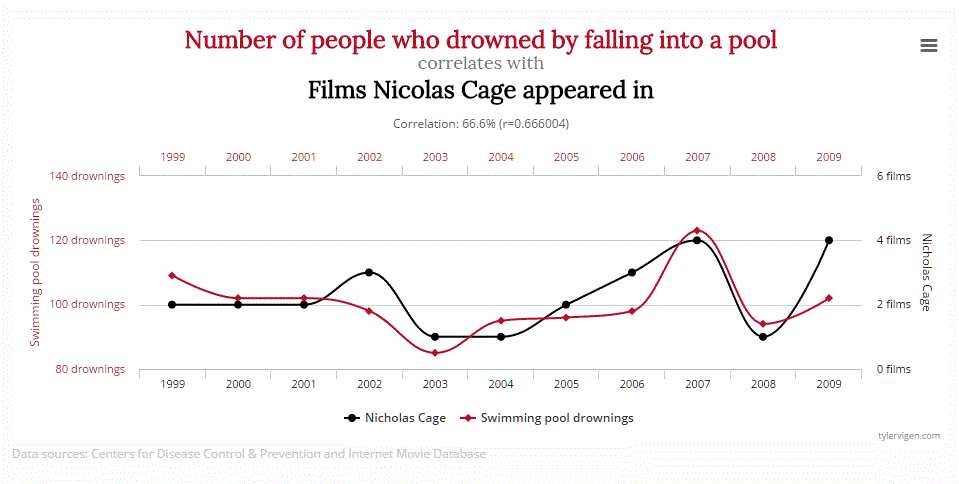The chart below is from a site called Spurious Correlations, it takes seemingly disparate facts and matches them together to create the illusion of a positive correlation. It is a simple and effective way of illustrating the problem of mistaking causation for correlation which is constant problem in the way people both think and view data.
If you were to take this at face value you would accept that there is a link between the number of films that Nicholas Cage has appeared in and the number of people who drowned by falling into a pool. You could even stretch the data a little and suggest that these drownings were not an accident and anyone who had even seen a Nicholas Cage film would nod sagely in agreement. Now consider the chart below which looks at significant historical events and the rise of the Dow.
This rather imposing looking chart is the centrepiece of an article titled The Dow’s tumultuous 120-year history, in one chart which appears on the MarketWatch site. The article boldly claims the following –
At its simplest, the chart proves once again that over the long term, the stock market always rises because “intelligence, creativity, and innovation always trump fear,” according to Kacher.
No it doesnt – this is mistaking causation and correlation. What the chart shows is the profound upward bias of the Dow and this is the driving force of the index moving higher. This is an example of survivor bias nothing more. The original Dow components were as follows –
It is obvious that these components would change over time and that this change would drag the index higher as non performing or irrelevant issues were moved out. The notion that it is innovation that is moving the market higher is not true and can be illustrated by the simple fact that Apple arguably the most innovative technology company of recent times was only added to the index in 2015. Google whose technology permeates everyday life and Amazon who have revolutionized retailing are nowhere to be seen. The Dow has remained technology light since its inception – if technology and creativity were the drivers of the market then these new companies would be added to the index very quickly.
It is quite a simple matter to generate events stick them on a chart and say they have some significance but simply saying it doesn’t make it true. As I explored last week news and significant events tends to have a complex relationship with an index and the question of does news move markets has been answered in the negative.
The article then goes onto make the bold claim –
Investing is more challenging than brain surgery,” Kacher told MarketWatch.
I will leave others to ponder the idiocy of this last quote.







